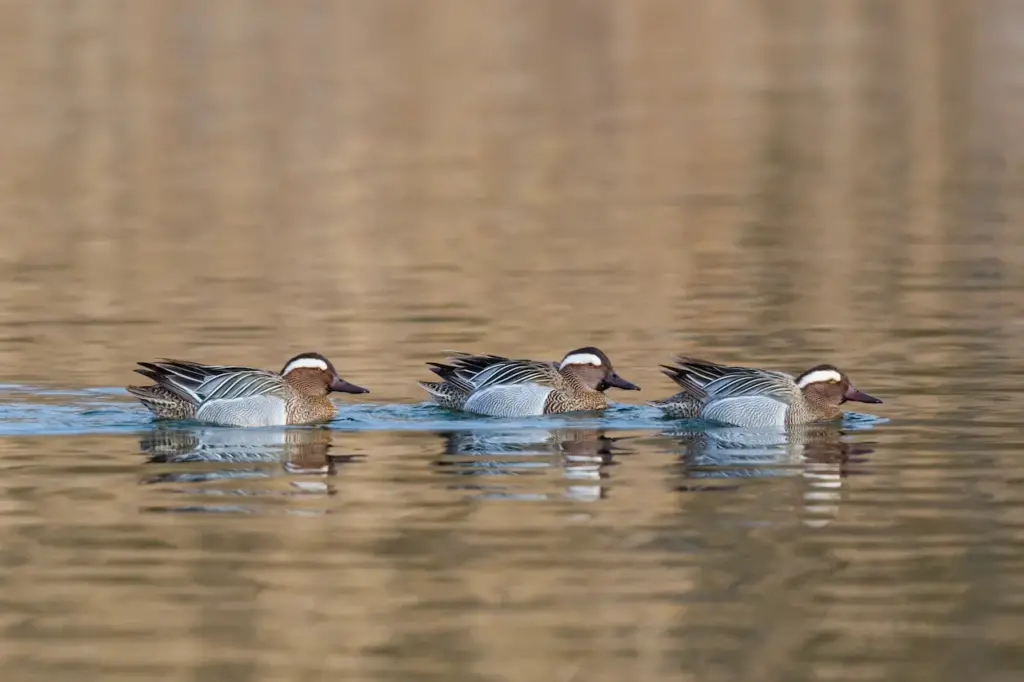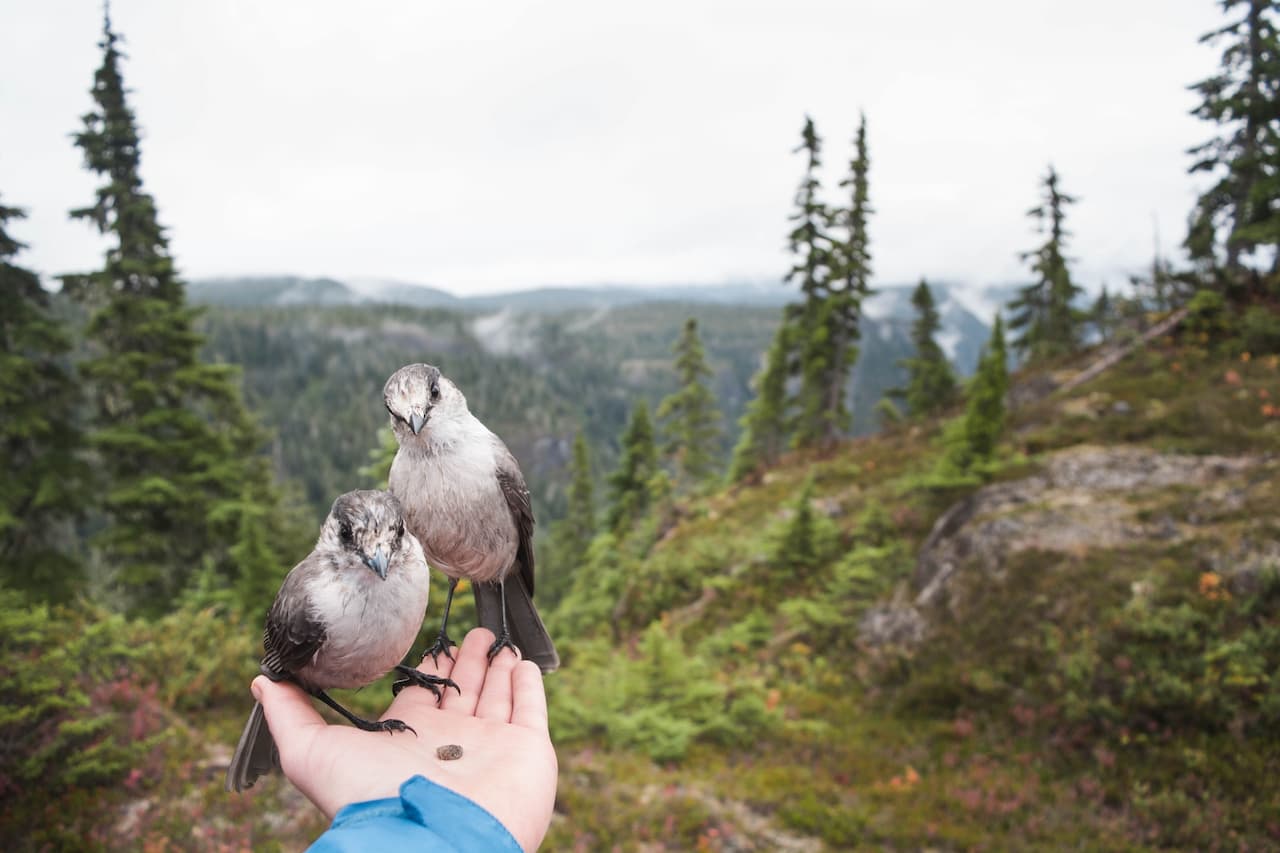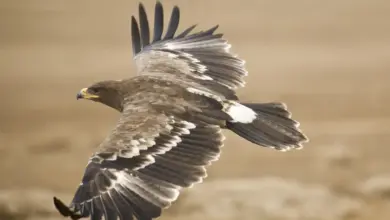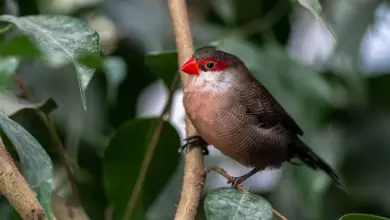The Garganey Ducks (Anas querquedula) breed in Europe and western Asia, migrating in large flocks south to winter in Africa.
Within their breeding range, they inhabit grassland areas that are close to shallow marshes and steppe lakes.

Description:
The adult male has a mostly grey plumage, except for the brown head and chest with a broad white crescent over the eyes. The bill and legs are also grey. In flight, a pale blue speculum (= distinctive wing patch) can be seen.
Similar Species:
The male can’t be confused with any other ducks. However, the female resembles the female Common Teal. She can be identified by her stronger face markings and more frequent head-shaking when dabbling.
She could also be confused with the female Blue-winged Teal – but the latter has yellow legs.
Call / Vocalization:
The male’s mating call has been described as a distinctive crackling call. The female is mostly silent, but occasionally a feeble “quack” can be heard.
Diet / Feeding:
Ducks usually feed by dabbling, upending (feeding upside down in water) or grazing on land. It may submerge its head and on occasion even dive to reach food.
In the breeding season, it eats mainly aquatic invertebrates, such as crustaceans, insects and their larvae, molluscs and worms. In winter, it shifts to a largely granivorous diet, feeding on seeds of aquatic plants and grasses, including sedges and grains.
Diurnal throughout the breeding season, in winter they are often crepuscular or even nocturnal feeders.
Ducks eat larvae and pupae often found under rocks, as well as aquatic animals, plant material, seeds, small fish, snails and crabs.
Feeding Ducks …

We all enjoy ducks and many of us offer them food to encourage them to come over and stay around – and it works! Who doesn’t like an easy meal!
However, the foods that we traditionally feed them at local ponds are utterly unsuitable for them and are likely to cause health problems down the road. Also, there may be local laws against feeding this species of bird – so it’s best to check on that rather than facing consequences at a later stage.
- Foods that can be fed to Ducks, Geese and Swans to survive cold winters and remain healthy when food is scarce in their environment.
Please note that feeding ducks and geese makes them dependent on humans for food, which can result in starvation and possibly death when those feedings stop. If you decide to feed them, please limit the quantity to make sure that they maintain their natural ability to forage for food themselves – providing, of course, that natural food sources are available.





